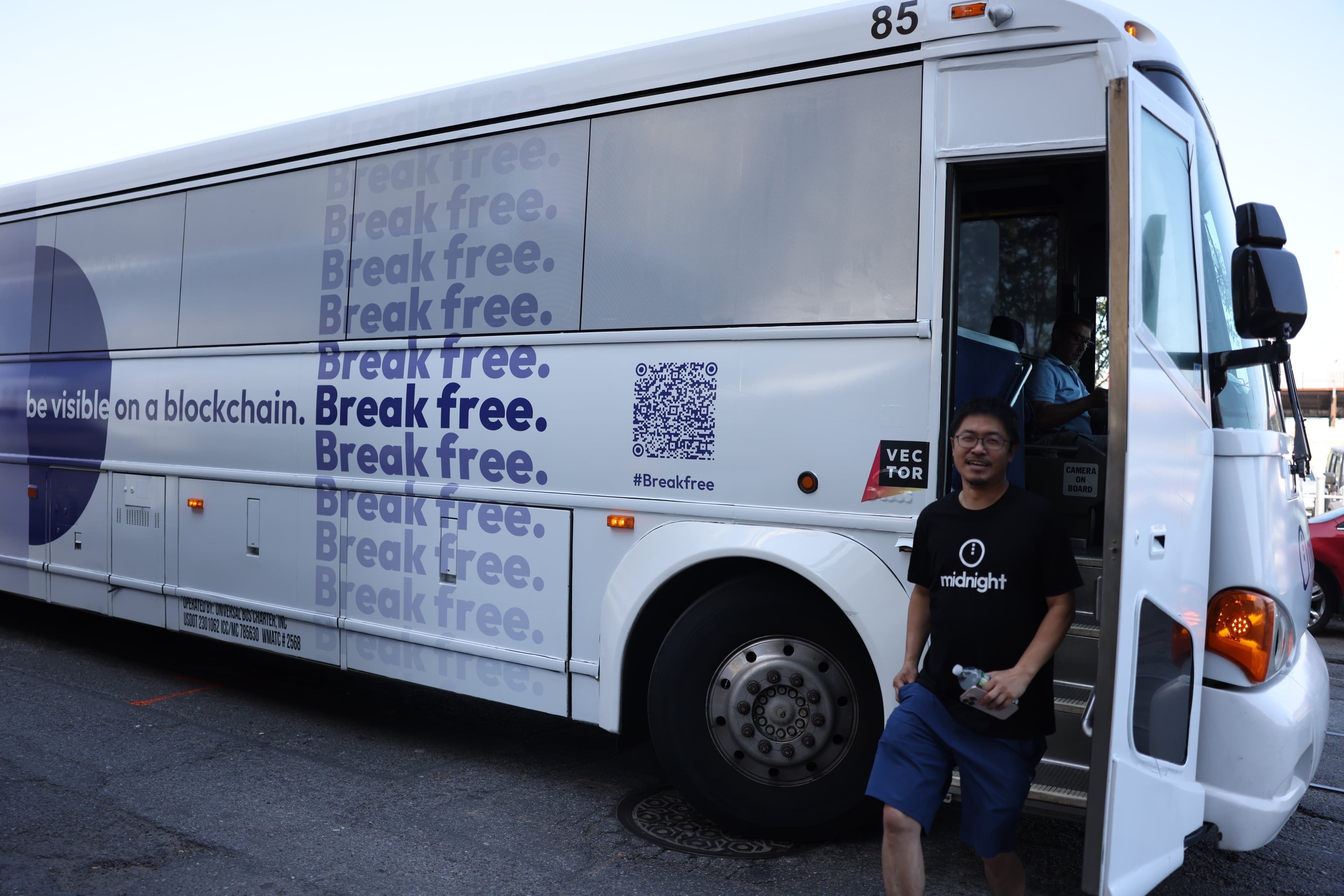Teams from the Midnight Foundation and Shielded Technologies had a strong presence across New York City and Permissionless IV last week. The Midnight privacy buses shielded conference-goers from the heat, and parked privacy at the forefront of the discussions about the future of Web3.
The Midnight tokenomics and incentives whitepaper launched in advance of Permissionless, sparking strong interest in how its token distribution model sets the stage for rational privacy on-chain.

The release of the whitepaper is a major milestone for the Midnight ecosystem. The document outlines the network’s foundational economics, including how the renewable DUST resource powers the network, how network participants can earn rewards, and how the NIGHT token is distributed. The model prioritizes fair and open access to the network from its start. For all the details, jump into the tokenomics and incentives whitepaper.
Privacy and the user-first web
A central theme under discussion at Permissionless was the need for a practical balance between transparency and confidentiality. Public blockchains make 100% of data visible, which is a technical design that is completely unsuitable for sensitive user or commercial information. This limitation creates a barrier to mainstream adoption. A new approach is required to give users and developers control over what data is shared and when.
Fahmi Syed, president of the Midnight Foundation, and Brendan Eich, CEO of Brave and the creator of JavaScript, explored this topic in a mainstage panel discussion. The conversation examined the mechanics of building a web that prioritizes user privacy by default. Eich’s work with the Brave browser provided a reference point for implementing privacy as a core product feature.
A practical path to rational privacy
Brendan Eich didn’t hold back in his mainstage remarks, saying that “we’re kind of in [a] metaphysical rebellion against the big tech surveillance powers that evolved on JavaScript.” He noted that foundational web technologies were repurposed for tracking. “The cookie was for keeping your login tokens,” Eich explained. “It wasn’t for third-party tracking, but that’s how it evolved, and JavaScript was just fuel on that fire.”
The panel made the case for programmable privacy: tools that give users control over how and when their data is shared. Eich emphasized the need for faster blockchains that treat privacy as a core design feature, not an afterthought. The Brave browser and its Basic Attention Token (BAT) ecosystem offer a working example of this model. BAT holders are included in Midnight’s NIGHT token distribution and will be eligible to participate during the Glacier Drop Phase.
The future of security is zero-knowledge
At a fireside chat exploring the more technical aspects of Midnight’s infrastructure, Benjamin Beckmann, Chief Technical Advisor to the Midnight Foundation, outlined how zero-knowledge (ZK) proofs enable a new layer of secure interaction. ZK proofs let someone confirm a claim without revealing the underlying data, making ZK technology well-suited for compliance scenarios such as Know Your Customer (KYC) checks without exposing identity documents to the blockchain.
This approach reduces data risk for both users and institutions. The key challenge now is making ZK tools more accessible to developers. Doing so could unlock a broader wave of adoption and build confidence in privacy-first infrastructure.
Commitment to an open ecosystem
Discussions in New York City underscored the need for open standards. Bob Blessing-Hartley, Shielded Head of Architecture and Director at the Linux Foundation Decentralized Trust (LFDT), joined a forum on advancing privacy tools through collaboration and transparency. Open-sourcing Midnight’s core components remains a priority.
Shielded CEO Eran Barak and Bob Blessing-Hartley also spoke about cooperative tokenomics at the LFDT event. The focus was on building systems that are predictable and fair by design, in code as well as in economics.
Keep an eye on this blog for more details about the future of Midnight’s open-sourcing initiatives from Bob.
Midnight tokenomics and incentives
The newly released tokenomics and incentives whitepaper explains how the core concepts of operational predictability, rational privacy, cooperative tokenomics, are engineered into the Midnight network.
Midnight’s native utility token, NIGHT, generates a renewable resource called DUST, which is used to pay for transactions. This design provides predictable operating costs that are not directly linked to the price of the native token.
To learn more, read the tokenomics and incentives white paper at midnight.gd

